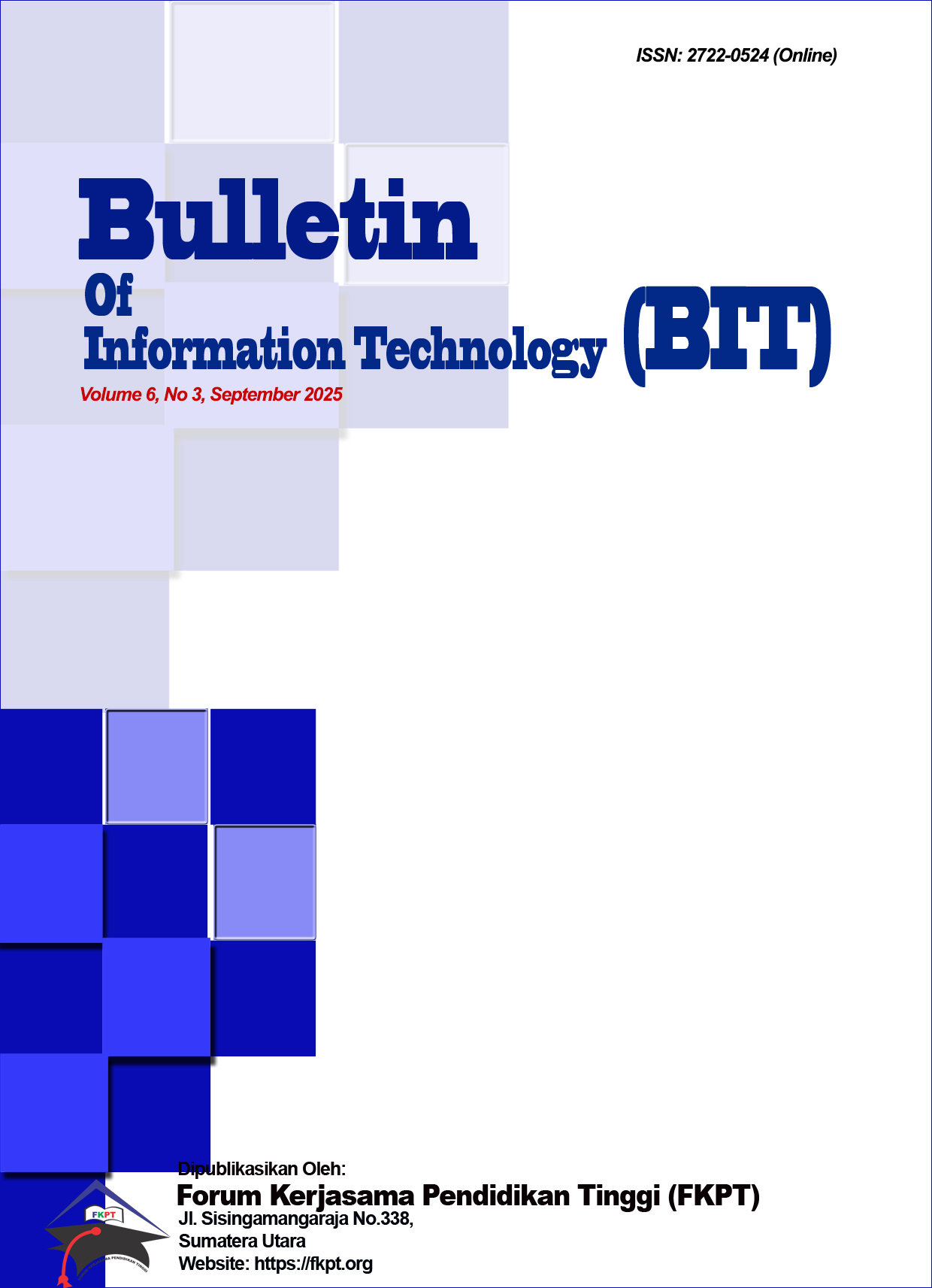Rancang Bangun Prototype Sistem Monitoring Dan Kontrol Tanaman Hidroponik Berbasis Internet of Things (IoT) Menggunakan Microcontroller ESP32
Abstract
Hydroponic farming has emerged as an innovative solution to address land limitations and support sustainable food production. However, its success highly depends on consistent monitoring of light intensity and nutrient water availability. This study aims to design and develop a prototype monitoring and control system for hydroponic plants based on the Internet of Things (IoT) using the ESP32 microcontroller. The system employs an ultrasonic sensor to measure water level, a Light Dependent Resistor (LDR) sensor to detect light intensity, a 12V DC water pump, and LED grow lights as actuators. Environmental condition data is transmitted in real-time to the Blynk mobile application, which also provides automatic notifications when anomalies occur, such as low water levels or light intensity falling below the threshold. The development method used is Research and Development (R&D) with the ADDIE model, covering analysis, design, development, implementation, and evaluation stages. Testing results show that the system operates automatically and in real-time, achieving 100% detection accuracy for water level measurements and 98% for light intensity measurements. The implementation of this prototype is expected to improve the efficiency and effectiveness of small-scale hydroponic cultivation and serve as an affordable solution for farmers and the general public to adopt smart farming technology.
References
E. I. R. Rhofita, “Optimalisasi Sumber Daya Pertanian Indonesia untuk Mendukung Program Ketahanan Pangan dan Energi Nasional,” Jurnal Ketahanan Nasional, vol. 28, no. 1, p. 82, May 2022, doi: 10.22146/jkn.71642.
M. Haikal, F. Fazri, S. Aisar, and N. Fakultas Pertanian, “SOSIALISASI BUDIDAYA SISTEM TANAM HIDROPONIK DAN VELTIKULTUR,” 2021.
M. Ridwan and K. M. Sari, “Penerapan IoT dalam Sistem Otomatisasi Kontrol Suhu, Kelembaban, dan Tingkat Keasaman Hidroponik,” Jurnal Teknik Pertanian Lampung (Journal of Agricultural Engineering), vol. 10, no. 4, p. 481, Dec. 2021, doi: 10.23960/jtep-l.v10i4.481-487.
N. Nasution, M. Rizal, D. Setiawan, and M. A. Hasan, “IoT Dalam Agrobisnis Studi Kasus : Tanaman Selada Dalam Green House,” IT JOURNAL RESEARCH AND DEVELOPMENT, vol. 4, no. 2, Oct. 2020, doi: 10.25299/itjrd.2020.vol4(2).3357.
R. Nandika and E. Amrina, “SISTEM HIDROPONIK BERBASIS INTERNET of THINGS (IoT),” Sigma Teknika, vol. 4, no. 1, pp. 1–8, 2021.
R. Doni and M. Rahman, “Sistem Monitoring Tanaman Hidroponik Berbasis Iot (Internet of Thing) Menggunakan Nodemcu ESP8266,” 2020.
L. Pamungkas, P. Rahardjo, and I. Gusti Agung Putu Raka Agung, “RANCANG BANGUN SISTEM MONITORING PADA HIDROPONIK NFT (NURTIENT FILM TEHCNIQUE) BERBASIS IOT,” 2021.
P. Denanta, B. Perteka, N. Piarsa, and K. S. Wibawa, “Sistem Kontrol dan Monitoring Tanaman Hidroponik Aeroponik Berbasis Internet of Things.”
P. Hidayatullah, M. Orisa, and A. Mahmudi, “RANCANG BANGUN SISTEM MONITORING DAN KONTROL TANAMAN HIDROPONIK BERBASIS INTERNET OF THINGS (IOT),” 2022.
P. D. C. R. Semiawan, Metode Penelitian Kualitatif. Grasindo, 2021. [Online]. Available: https://books.google.co.id/books?id=dSpAlXuGUCUC
Y. H. Rayanto, T. Rokhmawan, and M. Z. A. S. Maulana, PENELITIAN PENGEMBANGAN MODEL ADDIE DAN R2D2: TEORI & PRAKTEK. Lembaga Academic & Research Institute, 2020. [Online]. Available: https://books.google.co.id/books?id=pJHcDwAAQBAJ
Copyright (c) 2025 Siska Atmawan Oktavia Siska

This work is licensed under a Creative Commons Attribution 4.0 International License.
Authors who publish with this journal agree to the following terms:
- Authors retain copyright and grant the journal right of first publication with the work simultaneously licensed under Creative Commons Attribution 4.0 International License that allows others to share the work with an acknowledgment of the work's authorship and initial publication in this journal.
- Authors are able to enter into separate, additional contractual arrangements for the non-exclusive distribution of the journal's published version of the work (e.g., post it to an institutional repository or publish it in a book), with an acknowledgment of its initial publication in this journal.
- Authors are permitted and encouraged to post their work online (e.g., in institutional repositories or on their website) prior to and during the submission process, as it can lead to productive exchanges, as well as earlier and greater citation of published work (Refer to The Effect of Open Access).




.png)
.png)



